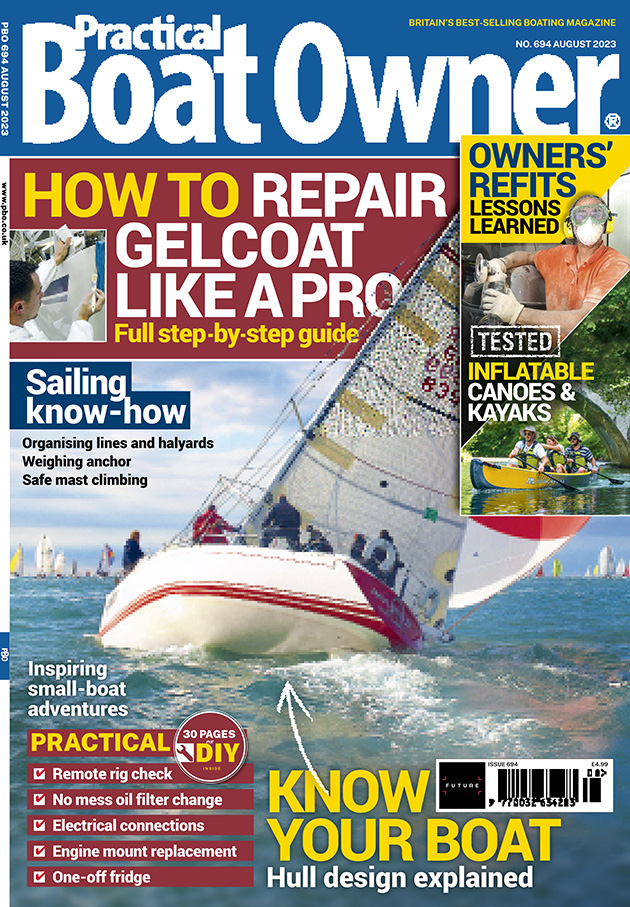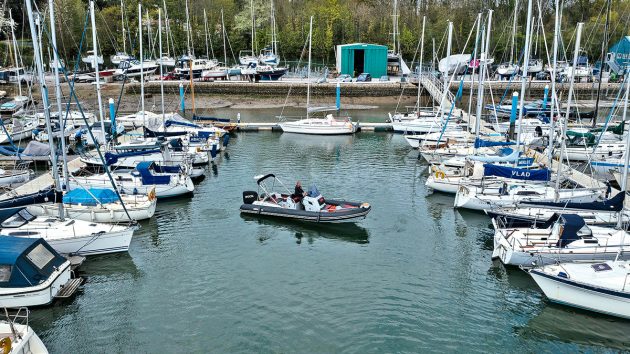Andrew Morton describes the Bernoulli principle and its effect on manoeuvring in tight spaces in a motorboat
Nautical know-how: The Bernoulli principle
Daniel Bernoulli was a Swiss mathematician who lived in the 18th century. He described the conservation of energy with respect to moving liquids and said that the faster a liquid moved, the lower the pressure it created on its surroundings.
This fact was used in the measurement of blood pressure for over 100 years after Bernoulli first described it, but it entailed sticking tiny glass tubes into
the arteries of patients – not the smartest of things to do before the concept of sterilisation and disinfection!
Interestingly, this principle explains many simple everyday occurrences: the fluttering of a flag, the movement of a reed in a wind instrument, the slice or hook of a golf or tennis ball, and many other phenomena, too numerous to mention.

A diagram illustrating the Bernoulli principle
The movement of a propeller through the water actually makes use of this phenomenon too, where the flow of water over both surfaces is not the same.
If you want to demonstrate the effect in a simple but amusing way, cut a straw in half, place one end in a cup of water and blow hard over the top of the cut straw with the other straw.
See what happens! Alternatively, try balancing a table tennis ball on an upturned hairdryer – switched on, of course.
When any boat travels quickly over shallow water, the water beneath the hull is displaced at speed and the pressure drops under the hull, so the boat sinks
deeper in the water.
There is a positive feedback effect here – the deeper the ship sinks, the more powerful the effect – and this can result in the ship hitting the bottom.
Mariners call it ‘squat’.
The same effect causes canal boats to hit the sides of a canal if driven too fast too close to the vertical side of a canal – and this also explains why boats refuelling at sea are never brought too close together.
What’s interesting is that this effect makes it very difficult to control a motorboat moving backwards, particularly one with a single sterndrive or outboard and no appreciable keel. Once you start travelling backwards, water flows round each side of the bow.
If you turn the helm to one side, even just slightly, the water starts to flow more quickly round one side of the bow than the other and the Bernoulli principle causes the bow to swing out even faster, so much so that it sometimes becomes impossible to control.
The solution? Travel very slowly when going astern. In addition, twin-screw boats can use the engine on the inside of the turn to control the swing, while single-screw boats will benefit from a bow thruster!
Going forward
What about going forward into a mooring? Is the effect the same? No, it isn’t. Not surprisingly, it operates in the opposite way, so that if your bow swings to one side or another – for example, as a result of a side wind – the Bernoulli effect tends to counteract the movement and keeps the bow on line.
So, going forward into a mooring is much easier than going backwards, because the Bernoulli effect reduces side drift going forward, but enhances it going backwards!
The faster you go, the more help you get, so there is something to be said for being bold when running into your slot in a pontoon!
However, once moored in your pontoon, facing forwards, when you decide to move back out, one slight turn of the wheel has a major effect on the bow.
It will swing out smartly through 90° or more without any problem at all, so you can use this effect to turn your boat quickly and easily as you back out of a pontoon.
In fact, take care not to overdo it, and don’t turn the wheel too early.
Continues below…
Coming alongside – essential skills for shorthanded crews
Coming alongside can be tricky for singlehanded and short-handed sailors. Øyvind Bordal has some sailing skills that will come in…
Sailing without an engine: How I jury rigged an alternative
When wind and batteries fail Genevieve Leaper is becalmed without an engine, but she jury rigs an alternative means of…
Nav in a nutshell: Lee bowing defined
Dick Everitt explains how you can get a little lift from the tide
Nav in a nutshell: Coping with currents
Dick Everitt explains how sailors can apply knowledge of tidal streams to ensure that water flow is a help, not…
Enjoyed reading Nautical know-how: The Bernoulli principle? 
A subscription to Practical Boat Owner magazine costs around 40% less than the cover price.
Print and digital editions are available through Magazines Direct – where you can also find the latest deals.
PBO is packed with information to help you get the most from boat ownership – whether sail or power.
-
-
-
- Take your DIY skills to the next level with trusted advice on boat maintenance and repairs
- Impartial in-depth gear reviews
- Practical cruising tips for making the most of your time afloat
-
-








